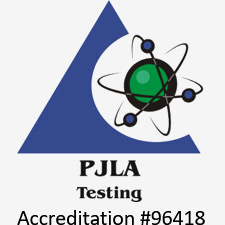Particle analysis provides essential insights into how materials behave, perform, and interact. But if the sample itself is complex, precision can become difficult to control. Heterogeneous samples often contain particles that vary in size, shape, or composition, or exist within matrices that scatter, absorb, or interfere with measurement signals. These characteristics make it challenging to obtain reproducible and meaningful data. Achieving precise particle analysis with complex samples necessitates a structured approach that minimizes variability at every stage and preserves the integrity of the system being measured.
1. Understand Sample Complexity Prior to Measurement
Identifying what makes a sample complex is the first step toward achieving precision in particle analysis. Once the nature of the complexity is identified, analysts can design a measurement strategy that minimizes its effects. Evaluating factors such as particle size distribution, matrix composition, and potential sources of interference allows challenges like aggregation, background noise, or refractive index mismatches to be anticipated and managed. This preparatory step ensures the particle analysis strategy is tailored to the sample, allowing measurements that are accurate, precise, and representative of the true system.
2. Establish Representativeness Through Proper Sampling
Precision in particle analysis is impossible without representativeness. A non-representative subsample can misrepresent the overall material, no matter how sophisticated the analysis. In complex samples, where particle size and density can vary, careful sampling is crucial for minimizing bias.
Key sampling practices include:
- Rotary or riffle splitting – to minimize segregation in powders and granular materials.
- The continuous, gentle mixing of suspensions – to prevent settling and concentration gradients
- The collection of replicate aliquots – to quantify variability and confirm uniformity.
Together, these practices ensure the portion analyzed reflects the whole sample and support precise, reproducible particle analysis in complex systems.
3. Control the Particle State During Preparation
Complex samples require careful preparation to achieve precise and reliable particle analysis. During handling, particles often interact with each other or their surroundings, leading to aggregation, dissolution, or changes in surface charge. Such effects can alter the apparent size and shape of particles, introducing variability into the results.
Effective preparation aims to stabilize the sample so that measurements reflect the particles’ true size and structure. Techniques like gentle sonication, the use of appropriate surfactants, and control of pH or ionic strength can help disperse aggregates without damaging the material. It is also important to manage concentration, as highly concentrated samples can cause multiple scattering, while overly dilute ones may not provide enough particles for reliable measurement. Overall, consistent sample preparation makes particle analysis more reliable and helps ensure results reflect the true behavior of complex materials.
4. Match Analytical Technique to the Type of Complexity
Precision improves when the technique for particle analysis matches the challenges of a sample, be they related to size distribution, optical properties, or matrix composition. No single method can fully characterize all particle behaviors in a complex system, so combining complementary analytical techniques is often necessary. Techniques include:
- Dynamic Light Scattering (DLS) – provides precise measurements of nanoparticle size through tracking Brownian motion. It is ideal for colloids and emulsions when properly diluted to minimize multiple scattering.
- Laser Diffraction – offers a wide dynamic range for polydisperse systems and works well for suspensions or powders with broad distributions.
- Resistive Pulse Sensing (Tunable Resistive Pulse Sensing or Coulter methods) – counts individual particles, providing accuracy in systems where optical methods may struggle.
- Imaging and Microscopy – verify shape, morphology, and aggregation state, supporting the interpretation of scattering or diffraction data.
- Fractionation techniques (like Field-Flow Fractionation or centrifugation) – separate overlapping size populations before measurement.
By selecting and integrating approaches based on sample complexity, scientists can achieve greater precision in their particle analysis.
5. Calibrate, Standardize, and Control Every Measurement
The right technique cannot yield reliable data without calibration. Therefore, the analytical instruments used in particle analysis must be regularly verified with certified reference materials that bracket the expected size range. Blank matrix runs can identify background interference, while routine instrument checks can prevent drift between analyses. Together, these quality control measures help maintain instrument stability and support accurate particle analysis, even in complex matrices.
6. Collect Robust Data and Maintain Quality Control
Complex samples often show broad or multimodal size distributions, requiring robust data collection to capture the full population. Replicate measurements test repeatability, and quality filters can help exclude unreliable events. Furthermore, integrating multiple techniques reduces uncertainty and builds confidence in the outcome of the particle analysis. Applied systematically, such methods turn raw measurements into coherent evidence, advancing how complex materials are understood and controlled.
7. Validate and Cross-Check the Findings
Validation is the final step in achieving the precise particle analysis of complex samples. It transforms the initial data into dependable results through confirming the chosen methods truly represent the system being studied. Comparing outcomes across techniques, such as DLS and imaging, helps reveal systematic errors and model limitations. Additionally, spike-recovery tests, where known particles are added to the matrix, can quantify how the sample environment can influence accuracy. Lastly, evaluating uncertainty through replicate measurements and statistical analysis can ensure that the precision achieved genuinely reflects the behavior of the real sample. Through validation, complex measurements become trustworthy representations of how particles truly behave within their native systems.
Realizing Precision in Complex Particle Analysis
Achieving precise particle analysis with complex samples requires a coordinated procedure in which every stage, from sampling to validation, contributes to the accuracy of the result. When sampling is representative, preparation is controlled, methods are well chosen, and data verified, even the most complicated mixture can yield reliable and reproducible measurements. At Jordi Labs, we use a suite of complementary analytical techniques, including Dynamic Light Scattering and Laser Diffraction, to characterize complex particle systems with precision and confidence. Our particle analysis can help you optimize formulations and ensure consistent performance across complex systems. Speak to our specialists to uncover additional insights about our particle analysis services and how it can uncover deeper insights into your materials.





